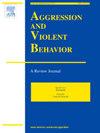The school bullying research program: How it has developed, 1976-2020
IF 3.4
2区 心理学
Q1 CRIMINOLOGY & PENOLOGY
引用次数: 0
Abstract
Several bibliometric analyses have commented on the rapid growth of research on bullying, and especially school bullying, over recent decades. There is now an international research effort, which might be called a research program, with several articles appearing on a daily basis. We review the previous bibliometric studies on school bullying and cyberbullying, which have mainly used the Web of Science database. To examine the content of research articles on bullying, we report an extension of previous research (Smith et al. 2021) to an examination of randomly selected samples of 100 journal articles relevant to school bullying over each of four time periods: 1976–95, 1996–2005, 2006–2015 and 2016–2020. Besides the number and country/continent of authors, and proportion of cross-country studies, we report on the type of article. For empirical articles, we report on the type of study (cross-sectional, longitudinal), type of data (quantitative, qualitative), source of data (e.g., self-reports, peer-reports, teacher nominations), main data focus (definitions/methodology, prevalence, correlates, attitudes, coping, cross-national), different types of bullying, various peer roles (bully, victim, bystanders etc.), differences in bullying (age, gender, ethnicity, disability), prejudice-based bullying, correlates of roles (e.g., individual, family, school, societal factors), peer roles, significant others, and interventions. We summarise what this analysis tells us about the development and focus of this research program, and some challenges the program faces in the future.
校园欺凌研究项目:如何发展,1976-2020
最近几十年来,一些文献计量学分析评论了欺凌研究的快速增长,尤其是校园欺凌。现在有一项国际研究努力,可以称之为研究计划,每天都有几篇文章发表。我们回顾了以往关于校园欺凌和网络欺凌的文献计量研究,这些研究主要使用的是Web of Science数据库。为了检查欺凌研究文章的内容,我们报告了先前研究(Smith et al. 2021)的扩展,对随机选择的100篇与学校欺凌相关的期刊文章样本进行了检查,这些论文分别在1976-95年、1996-2005年、2006-2015年和2016-2020年四个时间段:1976-95年、1996-2005年、2006-2015年和2016-2020年。除了作者的数量和国家/大陆,以及跨国研究的比例外,我们还报告了文章的类型。对于实证文章,我们报告了研究类型(横断面,纵向),数据类型(定量,定性),数据来源(例如,自我报告,同行报告,教师提名),主要数据焦点(定义/方法,患病率,相关性,态度,应对,跨国),不同类型的欺凌,不同的同伴角色(欺凌者,受害者,旁观者等),欺凌差异(年龄,性别,种族,残疾),基于偏见的欺凌,角色(如个人、家庭、学校、社会因素)、同伴角色、重要他人和干预措施的相关性。我们总结了这个分析告诉我们的关于这个研究项目的发展和重点,以及项目在未来面临的一些挑战。
本文章由计算机程序翻译,如有差异,请以英文原文为准。
求助全文
约1分钟内获得全文
求助全文
来源期刊

Aggression and Violent Behavior
Multiple-
CiteScore
7.50
自引率
4.30%
发文量
63
期刊介绍:
Aggression and Violent Behavior, A Review Journal is a multidisciplinary journal that publishes substantive and integrative reviews, as well as summary reports of innovative ongoing clinical research programs on a wide range of topics germane to the field of aggression and violent behavior. Papers encompass a large variety of issues, populations, and domains, including homicide (serial, spree, and mass murder: sexual homicide), sexual deviance and assault (rape, serial rape, child molestation, paraphilias), child and youth violence (firesetting, gang violence, juvenile sexual offending), family violence (child physical and sexual abuse, child neglect, incest, spouse and elder abuse), genetic predispositions, and the physiological basis of aggression.
 求助内容:
求助内容: 应助结果提醒方式:
应助结果提醒方式:


